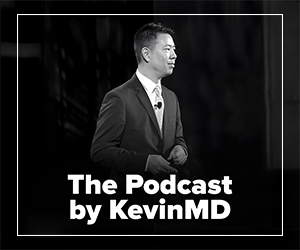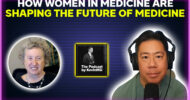In his book Cross Pollinations: The Marriage of Science and Poetry, Nabhan illustrates the interconnection between thinking across varied fields and how one specifically might inform the other. He is by no means the first or only thinker to harness looking across disciplines. This approach has certainly also informed the world of psychotherapy. The unifying glue, however, is time and space for reflection, to consider leisurely, to let the mind wander. It is to notice rather than direct thoughts, perhaps an extension of dreaming, in letting some connection find its way forward instead of serving as director. So, in a willingness to suspend assumptions, connections between desert food and disease may arise in contemplation of poetry disguised as what would otherwise be an afterthought. As an anesthesiologist and, more recently in my career, psychotherapist, this resonates deeply with my experiences. In one role I am a director of physiologic safety, in the other I am a knowledgeable guide in helping to draw edges around some of the more ephemeral considerations of self. And while there are so many approaches to this latter work, there are just a couple of frameworks that I lean into. How do interpersonal relationships define who we are in psychodynamic thinking? How does letting the brain follow its implicit and disparate record of experience lead down a path to explicit connection and emotional insight in Shapiro’s theory? And what does standing back to observe the overarching system contribute? These are not simple questions, of course, but let’s think about the last as it applies to professional life.
A systemic lens for psychotherapy
As a member-at-large on the board of the Rocky Mountain Family Therapy Network (RMFTN), our local chapter of the American Association for Marriage and Family Therapy (AAMFT), I would be remiss in not sharing reasons for my enthusiasm about a systemic approach to psychotherapy. There are so many frameworks for therapy it can feel overwhelming when you are looking for someone to work with. Differing perspectives also tend to be favored by different licensure groups, another area of confusion. While licensed professional counselors and marriage and family therapists both provide psychotherapy, they engage very different training. It matters because framework is what maintains coherence in an approach to the messy, complex world of human relations, emotions, assumptions, decisions, and choices that we try to corral into some sense when showing up as helpers.
The legacy of Freud and the evolution of understanding relationships
It helps to know that contemporary theories originated from Freud’s pioneering work over a hundred years ago, and this continues to inform much of Western thinking. Psychoanalysis first gave clinicians a way to conceptualize and understand seemingly random or nonsensical behaviors, decisions, and patterns in relationship. It provided a means to access the logic of the other person, their unwritten rules or underlying language, to share hypotheses, increase understanding, and reveal new choices toward mitigating struggle and suffering. Understanding relationship has come a long way since then and has, remarkably, underpinned the accuracy of observations Freud made prior to sophisticated brain imaging techniques, elucidation of early brain development, and findings in current infant research.
Thinking systemically in family dynamics
Marriage and family therapists are trained to think about the overarching system in which people function—most importantly the family system, both that into which we are born and the family we choose with our intimate partners and our children. This gives us an outline from which to proceed. It informs clinical understanding for unhappy exchanges in relationship, and how to foster change. It recognizes that change in one part of the system inevitably leads to change in the system as a whole. For example, when someone first stops drinking, a new equilibrium in the family system must be achieved. It is helpful to discuss this before everyone is taken by surprise when the discontinuation of drinking does not actually solve all of the problems. Or when a partner reticent to share their needs first learns to speak up, the system is impacted, and change is not always smooth because both or all partners have accommodated a way of being together. What happens when that is perturbed? When a partner dedicated to work to the exclusion of relationship decides they want to be more present, it is not just a matter of showing up but also learning to integrate into a system that evolved to function without their presence. While change is sought, it might not always be actually welcome, and this too is a challenge to both anticipate and work through. Systemic thinking looks at the possible impacts of change as well as observing how change is received to better help individuals, couples, or families to navigate this effectively toward healthier, richer, and more connected relationships.
Extending systems thinking to medicine
But systemic thinking is not limited to the psychotherapy of family. Identifying features in an overarching system that lead to poor outcomes was long ago harnessed to improve safety in the airline industry, and later, to some extent, in medicine. In navigating those issues in the physician work environment contributing to high rates of burnout and compassion fatigue, systemic thinking is highly relevant toward finding and implementing solutions. Immersion in these environments and changes over the last several decades has informed some of my perspective for our predicament as physicians providing complex and thoughtful care in increasingly challenging situations.
Burnout and the medical system
Contributing factors to burnout specifically have been identified in studies as lack of support, inadequate staff, and dwindling resources, compared to systems that function well for doctors and therefore patient care. Just as in family systems, relationships at work are crucial to a make-it-or-break-it environment. When complications of patient care occur, a system in which clinicians feel supported, in which decision making and understanding for the nuances of physiologic derangement can be discussed without fear of punishment, the overarching patient care system improves. This has been robustly demonstrated in the field of anesthesia in which safety improvements have over time converted a high-risk endeavor to one that is frequently considered routine. This came about in part from an ability to systematically deconstruct critical events. Any serious talk of well-being in the field has to consider a systems approach: What is wrong in the system that is amenable to change?
A call to align values and agency
As physicians we are trained to focus on the best interests of the patient, which contributes to deceptively sophisticated decision making. After all, the eight years minimum of training it takes to become a doctor is indicative of the enormous informational foundation plus the requisite skills to synthesize and deliver an appropriate treatment plan. Most people become doctors with a desire to help. But most doctors did not predict the changes in our work environments that value profit over patient safety or clinician work satisfaction. Doing more with less, turns out, has a breaking point. When a system fails to align with one’s values, there is no shame in recognizing a call to change. What that change might look like depends on each individual’s unique circumstances; there is no one-size-fits-all solution, unfortunately. And the courage to enact change requires both the feeling that one is deserving of a healthy work environment and a strong sense of personal agency. And is not this always the case, for so many reasons. These latter are some of the things that present in therapy—a journey, hopefully, in defining your change.
Maire Daugharty is an anesthesiologist who expanded her expertise by earning a master’s degree in clinical mental health counseling, merging her long-standing interest in mental health with her medical background. As a licensed professional counselor, licensed addiction counselor, and licensed marriage and family therapist, she brings a well-rounded perspective to her private practice, where she works with adult individuals and couples on a wide range of concerns. In addition to her counseling practice, she continues to work part-time as an anesthesiologist and has a deep understanding of the unique challenges faced by clinicians in today’s medical landscape. To learn more about her practice, visit Physician Vitality Services.





















![How should kratom be regulated? [PODCAST]](https://kevinmd.com/wp-content/uploads/Design-2-190x100.jpg)

![How genetic testing redefines motherhood [PODCAST]](https://kevinmd.com/wp-content/uploads/Design-3-190x100.jpg)
